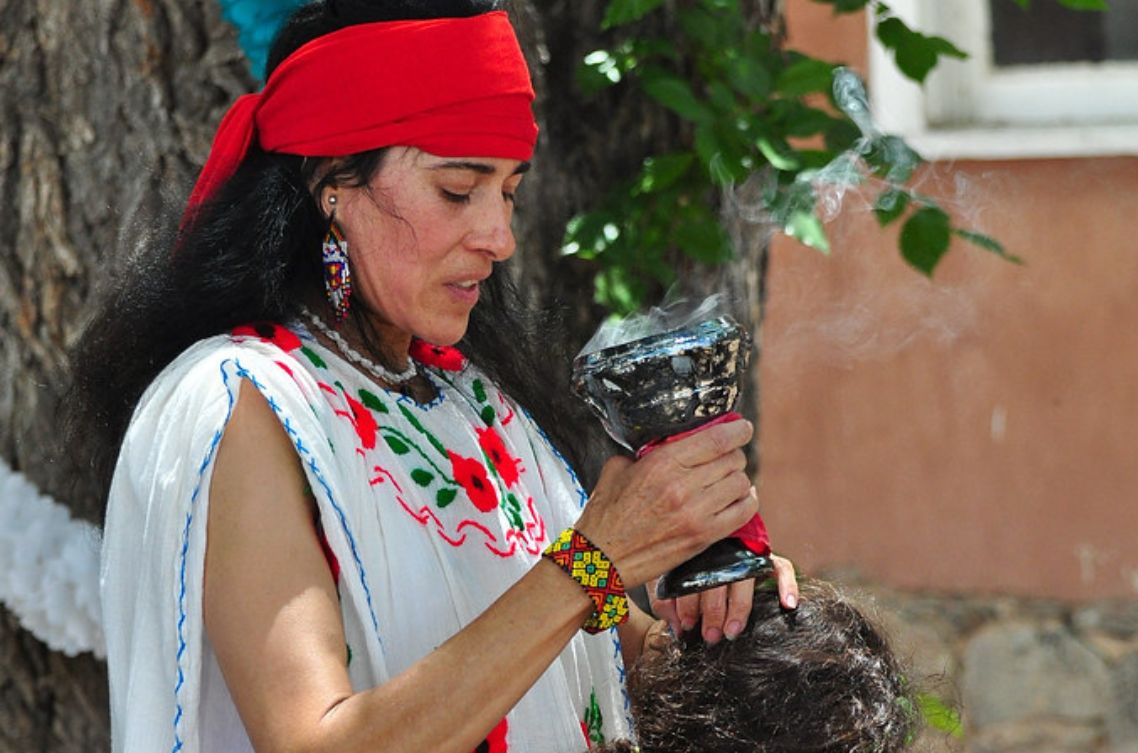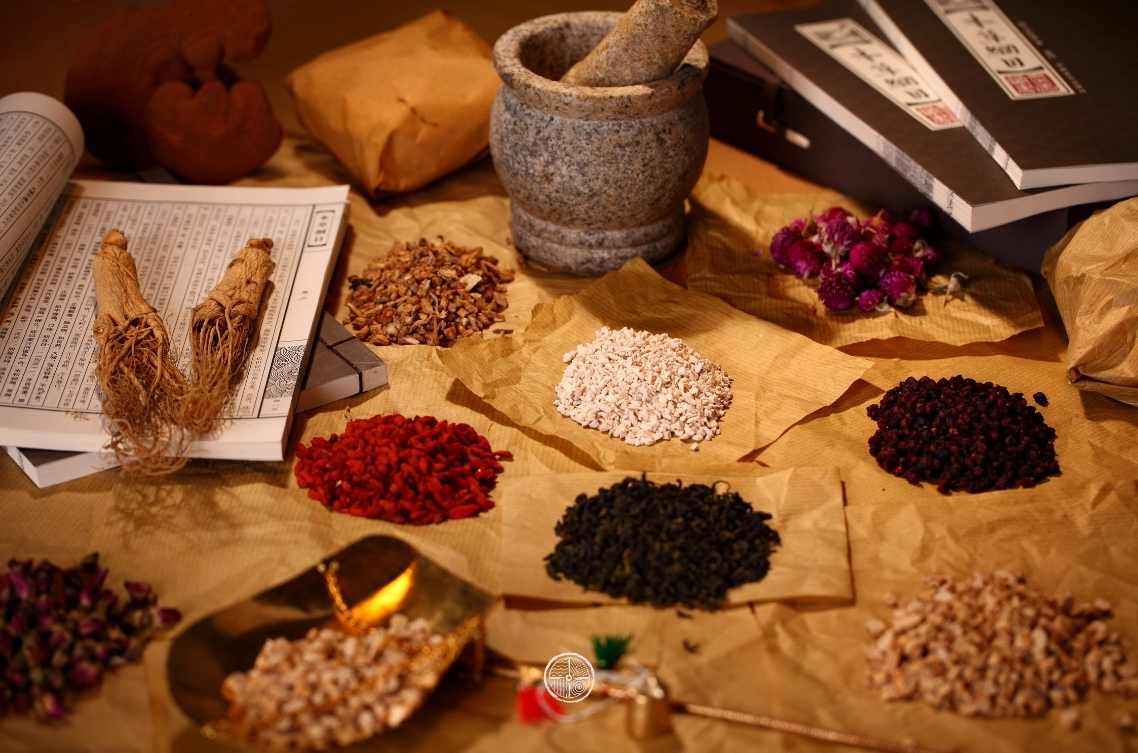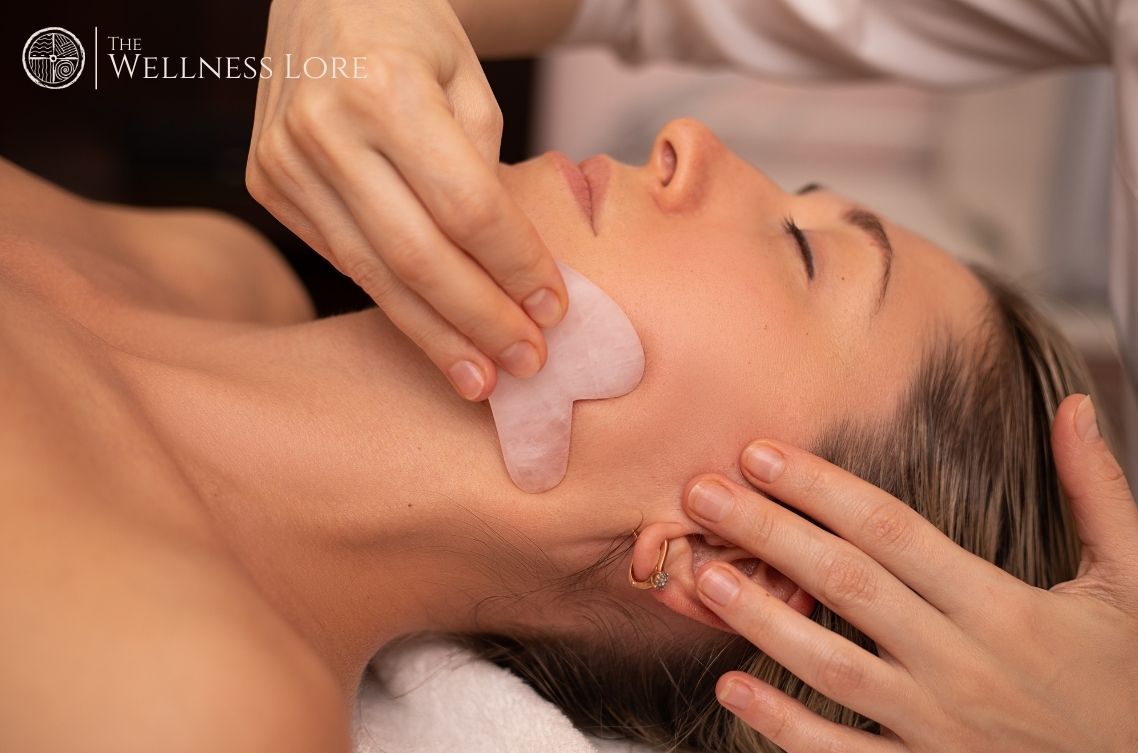Curanderismo – Latin American Traditional Healing

Curanderismo is a holistic Latin American folk healing practice. Curar is a Spanish word that means ‘to heal’. Curanderismo is therefore interpreted as a restorative process. A spiritual healing technique that seeks to achieve a balance between the patient and their surroundings in order to preserve health. It weaves religious beliefs, faith, and prayer into the use of herbs, massage, and other traditional healing modalities. Curanderismo is a system of traditional beliefs, rituals, and practices that address the physical, spiritual, psychological, and social concerns of those who practice it.
A curanderismo healer is known as curandero (male healers) or curandera female healers). Healing terminology varies depending on the language and culture of the region in which the technique is practiced. This form of traditional medicine contains characteristics unique to the location in which it is performed (Guatemala, Nicaragua, Honduras, Argentina, Mexico, the southwestern region of the United States, etc.). In Argentina, for example, a female healer is known as a remedieras. Curanderismo in Mexico is influenced by Aztec, Mayan, and Spanish cultures. Ancient aboriginal societies felt that there was a delicate balance between health, nature, and religion. Illness occurred when one of these areas was out of balance. Curanderos originated during the Spanish colonisation of Latin America. Curanderos are the consequence of a fusion of ancient Indigenous medical practices and Catholic rites in this region of the world. African rites introduced to Latin America by slaves also had an impact. Holistic remedies for intestinal obstruction (empacho), spiritual cleansings (limpias), laugh therapy (risa terapia), shawl alignments (manteadas), and the making of medicinal teas were all part of Indo-Hispanic healing rites (tes medicinales). Curanderas also worked as parteras (midwives), sobadoras (folk chiropractors), and yerberas (herbalists) (herbalist).
Latin American Spiritual Healing for Physical Wellness
Curanderismo can be broadly divided into physical and mental forms, however in practice, folk healers prefer to highlight the links between the body and the mind or spirit. Herbs are still widely used in modern curanderismo to treat bodily illnesses. Plants can be used alone or in combination to create herbal treatments. Garlic and onion are frequently utilized, as is aloe vera. Animal-based remedies are also employed, such as snake oil, which is made from snakeskin fat, and bufo toad medication, which includes a powerful psychedelic. The temazcal ritual is often recognised as one of the most potent and complete treatments. A shaman pours scented water upon heated volcanic rocks in a stone, igloo-shaped building filled with steam. The temazcal symbolises a return to the womb and cleanses the body of toxins.
Latin American Soul Cleansing
Other curandero rites are intended to provide spiritual or psychological healing. Certain diseases and curses need specific remedies. The evil eye is a curse brought on by a wicked stare that primarily affects newborns. Another illness with symptoms such as anxiousness, sleeplessness, and sadness is susto, which means terror or loss of spirit. Curanderos believe that spiritual cleaning, a pre-Hispanic tradition that sometimes includes prayers to Catholic saints, may cure both illnesses. A chicken egg and rosemary plants are usually required for the ritual. A curandero cleanses a patient by brushing their head, body, and limbs with herbs to remove negativity. Before breaking an egg into a glass of water, it is rubbed on the body. The curandero looks at the egg in the glass and makes predictions or offers advice based on the shapes he sees. The rite concludes with prayers and the sprinkling of incense to the afflicted.
Why Choose Curanderismo for Spiritual Healing?
Curanderismo follows a holistic approach to healing that draws on spirituality and folk medicine to solve a range of problems. Traditional healers cure illnesses caused by physical, psychological, spiritual, or social factors. Based on the source, the techniques or healing methods may change. Natural or supernatural influences are considered to cause illness. Herbal medicine, massage, and prayer are utilized to cure naturally occurring sickness. A large part of this condition is considered to be caused by powerful emotions triggered by trauma or a specific incident. Curanderas utilize rituals, spiritual cleansings, medicines, and prayer to treat various diseases and eliminate the hex or issue. Curanderismo, on the other hand, goes beyond conventional diagnosis by treating disorders that are supernatural in nature. Curanderismo, for example, cures conditions such as enoco (festering wounds created by another), mal ojo (evil eye or envy, jealousy, or intense adoration by another), and maleficio (witchcraft). If clients and counsellors are not aware of curanderismo, its rituals, and beliefs, these supernatural ailments may prove to be challenging. Let’s navigate through some of the prominent practices in curanderismo and respective their benefits.
Temazcal
A temazcal is a form of sweat lodge that originated with Mesoamerica’s pre-Hispanic indigenous people. The name temazcal is derived from Nahuatl, either from the terms teme (to bathe) and calli (home) or from the word temzcalli (house of heat). It is typically used to cleanse and purify the body,mind, and spirit. The process helps release toxins through sweating and moves lymphatic system through exfoliation.
Fire Cupping
Cupping treatment is an alternative form of medicine in which heated cups are used to induce a local suction on the skin. This therapy is mostly prevalent in Asia, although it is also found in Eastern Europe, the Middle East, and Latin America. It essentially increases blood flow in order to aid healing for stomach issues and discomfort.
Risaterapia
Risaterapia or Laugh Therapy is the therapeutic use of humor and laughter to improve emotional well being in order to facilitate improvement in health. This therapy can help people feel better by relieving pain and tension. It might be used to assist patients cope with grave diseases like cancer.
Mayan Accupressure
Mayan Acupressure is an ancient healing practice that entails progressively pressing key healing spots with the fingers to stimulate the body’s innate self-curative capacities. When these acupressure points are stimulated, they relieve muscle tension, encourage blood circulation, and boost the body’s life force energy, which aids in healing.
Geotherapy
Geotherapy is named after the use of earth (clay or mud) for medical purposes, as it helps to enhance health in a variety of illnesses. Clay has a myriad of properties, one of which is its ability to cool. It has anti-inflammatory properties and aids in scar healing.
Jugoterapia
Jugoterapia, often known as Juice Therapy, has been around for ages in various forms. It has been used in the prevention and treatment of disease by some of the world’s most known nutritional therapy leaders. It uses a rare blend of healing properties found in natural juices of fruits and vegetables, including vitamins, minerals, amino acids, carbs, anti-oxidants, and enzymes, to help the body achieve peak health.
Manteadas
Manteadas, also known as Shawl Alignment, is a traditional massage method that uses blankets and shawls to create a rhythm in which relaxation and self-healing activate the metabolism. This therapy improves the complete being, including the physical, physiological, emotional, and spiritual aspects. It relieves muscle contractions, tensions, “knots,” and sprains while also straightening the vertebrae and restoring posture.
The Future Of Curanderismo
Curanderismo has received great attention as an alternative medicine because of notable practitioners such as Teresa Urrea and Niño Fidencio, who created large followings during their lifetimes. Curanderismo lessons are now available at numerous institutions in Mexico, including La Tranca Institute of Healing in Cuernavaca. Internationally, interest in the tradition has risen, with one course even being taught at the University of New Mexico. It has also received a tremendous lot of attention in the anthropological field of study. Although much of the Hispanic community is now committed to the practice of curanderismo, many individuals are concerned that it may be lost due to a lack of interest among the younger generation or dependence on conventional medical methods.
Curanderismo has become a prominent Mexican American healing art with physical, spiritual, and supernatural components. Counselors who understand the profession, are conscious of their own prejudices and anxieties, and combine counselling techniques with cultural norms and beliefs are better able to help clients. Counselors who learn cultural competency benefit from better diagnosis, a stronger therapeutic connection, and adherence to ethical rules.
More Recent Stories



